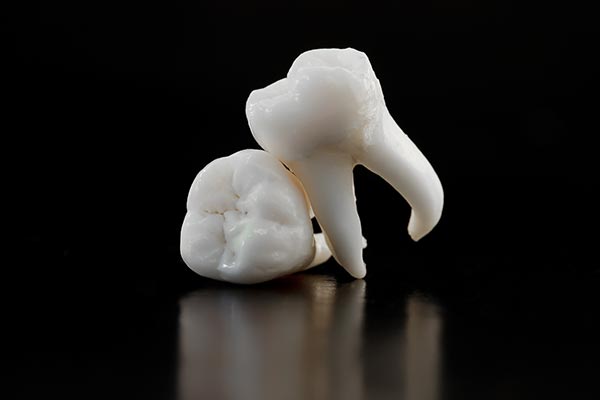Why may a tooth need to be extracted?
If a tooth is in an undesirable position, injured, or damaged from improper care, a general dentist may not be able to move into the proper spot or treat the compromised tooth.
Tooth decay
While a root canal can be used to address tooth decay that has reached the center of a tooth, if the pulp is severely infected, this procedure may no longer be a viable option. In some situations, the infection may even put the individual at risk if not removed from the mouth quickly.
Periodontal disease
Periodontal disease occurs when a patient’s gums become infected and inflamed. This problem is caused by bacteria present in plaque, which can spread to the ligaments and bones within the gums as well. Over time, deterioration of the gum tissue and surrounding structures can loosen the teeth until there is no firm foundation, leading to the tooth falling out on its own or needing to be extracted.
Impacted teeth
Teeth that are unable to erupt due to being in an undesirable position or blocked by other teeth can be problematic. In some cases, the adult teeth coming in can hit and damage other teeth that have already come through the gums. If orthodontics cannot guide the impacted teeth, a surgical extraction can remove the tooth before it causes further issues.
Overcrowding
Sometimes teeth become crowded together if the jaw is too small to accommodate all the teeth. While aligners or braces can often be used to better space out the teeth and even open the jaw, this solution is not always possible. The dentist may recommend extracting a tooth to create more space.
Dental trauma
Small cracks and chips can often be fixed with a dental crown, veneers, or dental bonding, but more extensive damage can result in the loss of a tooth. If a large chunk of the tooth comes off, the crack extends to the root of the tooth, or the tooth is dislodged completely, it may not be possible to save it.
What comes after a tooth extraction?
After a tooth is extracted from the mouth, there are several solutions that may be recommended to fill in the space left behind. Dental restorations, such as implants, bridges, or dentures, may be used to replace the tooth, making it look and function similarly to a natural tooth. Orthodontics may also help close spaces.
Conclusion
Tooth extractions are a common solution recommended by a general dentist when other options for saving the tooth have run out. Fortunately, there are several restorative treatments patients can consider to preserve their smiles.
or call Simply Smiles Dentistry at 520-368-3351 for an appointment in our Tucson office.
Related Posts
General dentistry aims to keep your teeth and gums healthy by educating you about proper oral hygiene and performing preventative treatments that protect against issues like gum disease and tooth decay. The American Dental Association recommends going to the dentist at least two times per year. These visits are used to evaluate the condition of…
When it comes to general dentistry practices, these offices typically include primary care dental providers. A general dentist focuses on diagnosing dental problems, treating dental issues, and overall oral health care. General dentists may provide gum care, teeth cleaning, root canals, veneers, bridges, and preventative dentistry. However, just as there are dentists that focus on…
You might think that if you are diligent about brushing and flossing at home, you can visit a dentist's office less often. However, general dentistry professionals agree that regularly visiting a dentist is important for your dental and overall health, even with good oral hygiene. In addition, there are numerous reasons it is a good…
